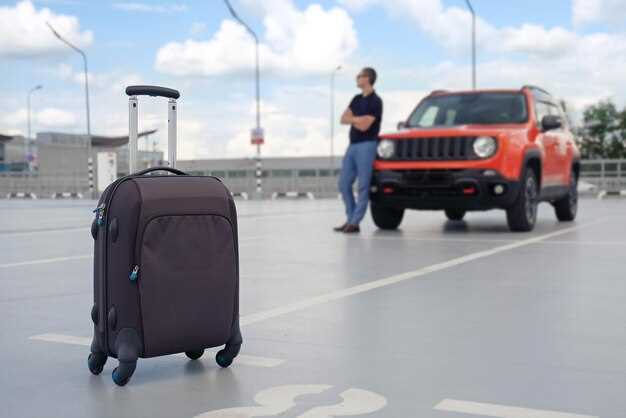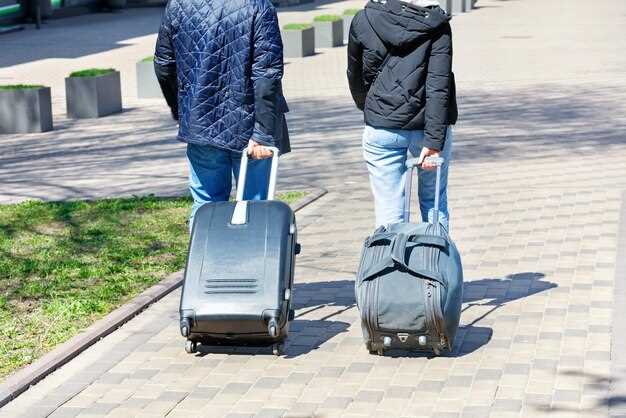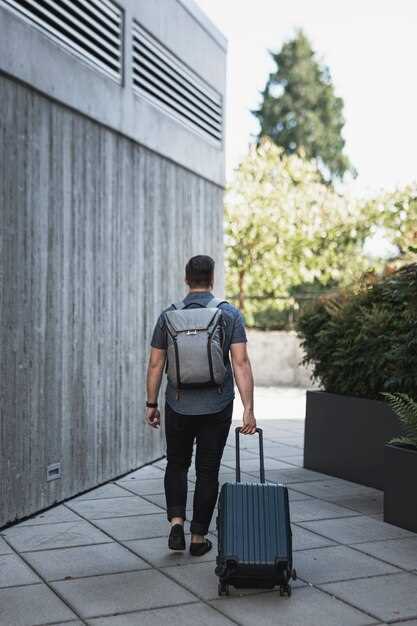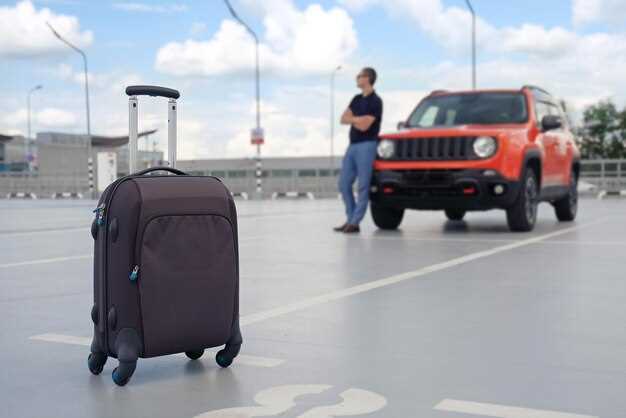If you’re considering investing in a ride-on suitcase, the first piece of advice is: assess your travel needs and preferences. For families with young children or frequent travelers needing to cover large distances within airports, these innovations may prove invaluable. Initially designed to entertain restless kids, motorized suitcases have rapidly gained popularity among adults, promising the convenience of mobility without the hassle of lugging around heavy baggage.
Considering their functionality, ride-on suitcases can transform a stressful experience into a joyful ride, minimizing travel fatigue. Recent models feature robust wheels, allowing easy navigation through terminals, and some even offer a range of 13-18 kilometers on a single charge. The convenience factor is undeniable; however, the added weight, often exceeding 7 kilograms when empty, is a significant consideration. Travelers must weigh the benefits of this novel mode of transport against the physical burden and potential airline restrictions that may apply.
When it comes to selecting your ideal ride-on suitcase, pay attention to battery life, charge time, and maximum speed, which typically averages around 8 kilometers per hour. Brand reputation is equally crucial, as build quality will affect both the durability of the suitcase and the level of support you can expect post-purchase. With prices ranging from $200 to over $1000, ensure your investment aligns with your travel frequency and lifestyle.
Understanding Ride-On Luggage

Choose ride-on luggage that suits your travel needs and elevates the experience of moving around airports. Consider features such as weight capacity, battery life, and speed, which directly impact usability and convenience. Look for models supporting a minimum weight of 100 kg (220 lbs), ensuring comfortable use for most adults.
Battery life is a critical factor; opt for suitcases that offer at least a 10-mile range on a single charge to avoid unexpected stops during transit. Additionally, evaluate the ease of swapping or charging batteries, as this can be pivotal when on the move.
Speed is another feature to keep in mind. While 5 mph may not seem fast, it significantly reduces walking fatigue and turns travel into a more enjoyable experience. However, balance speed with safety features like smooth braking systems and sturdy handles for steering.
Explore the suitcase’s storage capacity. Prioritize models with efficiently organized compartments that maximize available space without compromising the luggage’s portability. Some ride-on suitcases incorporate detachable bags or compartments, adding flexibility for different travel scenarios.
Don’t overlook the importance of construction materials. Seek robust yet lightweight options that withstand travel-related stress while ensuring ease of movement. Materials like polycarbonate or ballistic nylon offer durability without significantly increasing the suitcase’s weight.
Finally, consider user-friendly controls–intuitive buttons or even mobile apps enhance the ease of maneuvering your luggage. Some models offer remote control features, providing additional convenience during travel.
How Ride-On Suitcases Work: A Breakdown of Their Mechanics

Dive into the mechanics of ride-on suitcases by closely examining their intricate components. At the core, these innovative suitcases emphasize automation with the integration of rechargeable batteries that power the motorized wheels. This setup allows for seamless mobility even on inclines.
With remote or app-controlled features, users have the advantage of adjusting speed settings to suit their comfort. Typically, these suitcases can reach speeds of up to 5 mph, making navigation through airports swift and efficient. The control interface is often user-friendly, catering to seamless operation even for first-time users.
Highlighted below are the vital components of a typical ride-on suitcase:
| Component | Functionality |
|---|---|
| Motorized Wheels | Enable smooth and automated movement, reducing manual effort. |
| Rechargeable Battery | Powers the motor, ensuring sustainability and endurance for longer durations. |
| Control Interface | Allows riders to adjust speed and navigate seamlessly. |
| Sturdy Frame | Provides necessary stability and support while riding. |
Safety features, such as automatic braking systems and proximity sensors, play a significant role in preventing accidents and enhancing rider security. These smart technologies detect obstacles and adjust speed automatically, ensuring a safe ride.
These suitcases are engineered to handle diverse terrains, thanks to their robust wheel designs. They can navigate smoothly on carpets, tiles, and hard floors. With the added convenience of removable batteries, charging becomes a hassle-free task, often compatible with standard USB or wall outlets.
Understanding these technical aspects helps users make informed decisions, ensuring they harness the full potential of ride-on suitcases. This approach to luggage management truly unburdens travelers, allowing for an elevated travel experience.
Differences Between Traditional and Motorized Luggage
Choosing between traditional and motorized luggage largely depends on your travel needs and preferences. Here’s how they compare:
- Mobility: While traditional suitcases rely on your physical effort to pull or push, motorized luggage effortlessly follows you with the touch of a button or a smartphone app. This feature is particularly beneficial for travelers who commute through large airports or have mobility challenges.
- Weight: Motorized luggage tends to be heavier due to the inclusion of batteries and motors, which could affect weight restrictions imposed by airlines. Traditional luggage is lighter and often easier to handle when lifting onto baggage carousels or overhead storage.
- Price: Motorized suitcases are generally more expensive than their traditional counterparts. The added cost stems from the technology integrated into these new-age travel companions. If budget is a concern, traditional luggage offers a more economical solution.
- Maintenance: With motorized options, consider the additional maintenance for electronic components. Batteries require charging, and mechanisms need regular checks to ensure functionality. Traditional luggage, on the other hand, usually needs only minor repairs like zipper replacements.
- Capacity: Both types offer a range of sizes, but motorized versions may sacrifice interior space for motor housing. If maximizing packing space is your priority, traditional luggage might be preferable.
Consider these factors to select the most suitable luggage for your journeys, balancing convenience against practicality, and cost against features.
Top Features to Consider When Buying Ride-On Suitcases
Prioritize the suitcase’s weight capacity to ensure it can accommodate your child or yourself without compromising safety and performance. Check the manufacturer’s specifications for the maximum weight limit and confirm it suits your needs.
Battery life plays a pivotal role in usability. Opt for a suitcase with a long-lasting battery, ideally one that provides several miles of travel on a single charge. This ensures smooth transitions through airports and reduces the need for frequent charging stops.
Focus on the maneuverability of the suitcase. Look for features like 360-degree rotating wheels, which make navigation through crowded areas effortless. A tight turning radius is particularly beneficial in busy terminals.
Safety features shouldn’t be overlooked. Consider models equipped with reliable brakes and anti-tip technology to minimize the risk of accidents. Secure locking mechanisms are also crucial, especially if you plan on leaving your suitcase unattended.
Assess the storage capacity available inside the suitcase. It should be spacious enough to store essentials but not overly bulky, which could add unnecessary weight. Consider models with organized compartments to keep your belongings tidy.
Evaluate the build quality and materials. Choose a suitcase made from durable materials like polycarbonate or ABS, which offer excellent impact resistance and durability. A well-constructed suitcase withstands the rigors of travel better, ensuring long-term use.
| Feature | Key Aspect | Recommendation |
|---|---|---|
| Weight Capacity | Maximum support | Select according to user weight |
| Battery Life | Travel distance | Choose long-lasting batteries |
| Maneuverability | Ease of navigation | Look for 360-degree wheels |
| Safety Features | Accident prevention | Ensure brakes and anti-tip functions |
| Storage Capacity | Space for belongings | Organized compartments |
| Build Quality | Material durability | Polycarbonate or ABS recommended |
Age Appropriateness: Who Benefits Most from Ride-On Luggage?
The greatest advantage of ride-on luggage shines when used by children aged 2 to 7. These suitcases combine functionality and fun, encouraging young travelers to stay comfortable during long airport waits while reducing the physical strain on parents who often end up carrying their kids. Specifically, small wheels and lightweight materials make these suitcases manageable for little ones, while the addition of motorization can help navigate larger airports more swiftly.
- Children (2-7 years): For kids in this age group, travel can quickly become tedious. Ride-on luggage transforms the airport experience into a playful adventure, reducing tantrums and keeping them engaged.
- Older Adults: Seniors who might struggle with carrying traditional luggage benefit from motorized options, reducing physical exertion. Features like automatic brakes and speed controls can enhance mobility and safety.
- Frequent Travelers: Business travelers or frequent flyers who prioritize convenience will find these options perfect for minimizing delays between gates. The capacity to ride their luggage through sprawling terminals conserves energy for more pressing matters at their destination.
Although attractive for varied ages, it’s essential to consider weight limits and handle designs. With these considerations, each user can find a suitable model that meets their travel needs effectively, making ride-on luggage an adaptive choice for multiple generations.
Evaluating the Pros and Cons of Motorized Suitcases

Investing in a motorized suitcase brings undeniable convenience, especially when navigating long airport corridors and bustling stations. Saves time and energy by allowing you to glide alongside your luggage rather than dragging it. Studies show that travelers with heavy luggage experience reduced fatigue when using motorized options. However, be aware of increased weight, as these suitcases incorporate batteries and motors, adding several kilograms to their overall heft. For those frequently managing heavy bags, the motorized option can offset this drawback through ease of transport.
An integrated USB charging port stands out as another advantage, keeping your devices powered on the go. This feature can be crucial during delays or long hauls. Yet, travelers must consider limitations of battery life and abide by airline regulations regarding lithium batteries. Ensuring your suitcase adheres to these rules prevents potential inconveniences.
While motorized suitcases offer enhanced mobility in large terminals, they may not always be the best fit for narrow spaces or short trips. The additional cost is noteworthy, with prices often significantly higher than traditional suitcases. Calculate not just initial outlay but also potential savings in time and reduction in physical strain.
Certain models feature app connectivity for added control and security. This technology elevates user experience with location tracking and remote locking. Yet, this benefit comes with the need for regular updates to avoid technical hitches.
Motorized suitcases suit those prioritizing comfort and tech features during travel. For frequent flyers or individuals with physical constraints, they present an attractive choice. Evaluate personal travel patterns, health considerations, and budget to determine if the trade-off in weight and cost aligns with your priorities.
Convenience Versus Portability: The Practical Trade-Offs
Choose a ride-on suitcase if you want to breeze through airport terminals with ease. These motorized wonders save you from the strain of carrying heavy luggage and cut down the time spent walking. However, remember that motorized wheels add significant weight, potentially making it less practical when lifting or storing your suitcase in overhead bins.
Consider the destinations you typically travel to. If your journeys involve a lot of walking or cobblestoned streets, the added weight can become a burden. On the flip side, smooth surfaces in airports and hotels are where these suitcases excel, turning long waits and transfers into a more enjoyable experience.
Be mindful of battery life, especially on longer trips; many models offer only a few hours of ride time before requiring a recharge. Check if your chosen suitcase allows for easy removal of the battery, which can be crucial for air travel regulations regarding lithium batteries.
For those who often find themselves in a hurry, a ride-on suitcase offers significant time savings. Yet, if you prioritize portability over convenience, a traditional lightweight suitcase might suit your needs better. Weigh your priorities and typical travel patterns to find the perfect balance between convenience and portability.
Security Concerns with Motorized Luggage
Choose motorized luggage that comes equipped with robust security features, such as TSA-approved locks and secure zippers. Smart technology integration is an additional boon, offering GPS tracking through a companion app. This technology allows you to locate your suitcase quickly if it gets misplaced or stolen.
It’s also imperative to safeguard against hacking, especially if your luggage incorporates Bluetooth or Wi-Fi connectivity. Regularly update the firmware and passwords to minimize risks. Use strong, unique passwords that include a mix of letters, numbers, and symbols to deter unauthorized access.
Ensure your motorized suitcase complies with airline regulations concerning battery capacity and placement. Airline-approved batteries should be easily removable, as some airlines require you to carry them separately. Verify battery specification limits – many airlines allow lithium batteries up to 100Wh, though some may permit up to 160Wh with prior approval.
Finally, double-check any local transport regulations or restrictions, particularly when traveling internationally. Countries may have specific rules regarding the use of motorized luggage in public transport systems or certain locations. Adhering to local laws ensures a smooth travel experience without security hiccups.
Cost Analysis: Is Investing in a Ride-On Suitcase Justified?
Investing in a ride-on suitcase makes financial sense if frequent travel is part of your routine. These innovative suitcases offer more than mere convenience; they can be a practical long-term solution to common travel challenges. Let’s break down the costs and benefits to see if it’s the right choice for you.
- Initial Investment: Ride-on suitcases generally cost between $150 and $400. While this may seem steep compared to standard luggage, the unique features should be considered.
- Transportation Savings: Having a ride-on suitcase can potentially save on transport costs within large airports. Instead of using paid transport services or renting carts, you can glide to your gate at minimal extra expense.
- Durability and Quality: These suitcases are often built from high-quality materials designed to withstand rigorous use. This durability can reduce the frequency of luggage replacements, ultimately saving money over time.
- Time Efficiency: By using a ride-on suitcase, travelers can significantly reduce the time spent navigating terminals, which can be invaluable during tight layovers or unexpected gate changes.
- Convenience and Comfort: These suitcases offer a comfortable way to travel, especially for families or elderly travelers who may find long walks in airports challenging. The ease they provide can outweigh the initial cost, enhancing travel comfort and reducing stress.
- Resale Value: Given their novelty and robust build, ride-on suitcases can hold their value well. Should you decide to sell, they often retain a reasonable portion of the purchase price.
In conclusion, a ride-on suitcase merits consideration for travelers aiming for efficiency, comfort, and long-term savings. Evaluate your travel frequency and needs to see if the benefits align with your circumstances.
User Reviews: Common Praise and Critiques from Owners
Dmitry from Moscow highly recommends the ride-on suitcase for its ability to turn long airport walks into a relaxed ride. He shares that the motorized wheels offer smooth maneuverability, particularly in busy terminals. Many owners echo Dmitry’s sentiment, applauding the convenience and speed these suitcases offer in eliminating the dreaded airport sprint.
On the flip side, Jessica from New York points out that the battery life could use some improvement, especially for frequent travelers covering long distances. Some users find the added weight of motorized wheels a disadvantage when it comes to lifting the suitcase into overhead compartments.
One owner, Alex, appreciates the integrated security features, mentioning how he feels more at ease with his belongings securely locked and tracked. However, Sarah from London advises prospective buyers to check the airline regulations since ride-on suitcases may be restricted due to their battery.
Favorable comments often highlight the entertainment factor for children. Parents like Mark share stories of their children enjoying the ride, making the travel experience stress-free and even fun. This feedback is particularly common among families, indicating the ride-on suitcase as a handy solution for traveling with kids.
Overall, the practicality of motorized ride-on suitcases gains positive reviews, with most criticisms centering on weight concerns and battery performance. Prospective buyers should weigh these factors and consider their travel habits before making a purchase.
Q&A:

Are ride-on suitcases suitable for all types of travel?
Ride-on suitcases are particularly beneficial for individuals who often travel through large airports or frequently move between terminals. They provide a convenient way to navigate these spaces without needing to carry or drag luggage. However, if you primarily travel using smaller vehicles or regional transportation, you might find the added weight and size less convenient. It’s worth considering the specific travel context before deciding.
Do motorized wheels significantly increase the weight of the suitcase?
Yes, the inclusion of motorized wheels does add extra weight to the suitcase. This can be a disadvantage if you are concerned about airline weight restrictions or if you need to lift the suitcase frequently. While the convenience of motorized travel can offset the added weight, it ultimately depends on your specific travel habits and priorities.
How reliable are the motorized features on ride-on suitcases?
The reliability of motorized ride-on suitcases largely depends on the brand and model. High-quality models from reputable brands generally offer reliable performance with robust battery life and durable components. However, like any electronic device, they can be susceptible to occasional technical issues. Reading reviews and choosing a model with a good warranty can help mitigate these concerns.
Can children use motorized ride-on suitcases safely?
Many ride-on suitcases are designed with child safety in mind, featuring secure seating and easy-to-use controls. However, supervision is advised, especially in crowded or unfamiliar places, to ensure safety. Always check the age and weight recommendations from the manufacturer to ensure that the product is suitable for your child.
